
Send money in 29 currencies
Cashback on hotel bookings
You can get by using your card a lot of the time in France, nearly all restaurants, bars and shops take card and there are numerous ATMs around the country however it is always useful to carry a small amount of cash if ever a need arises. For example if you want to go market hunting (and who doesn’t?), you’ll need cash. Places like Porte de Clignancourt and Les Puces de Montreuil in Paris have some amazing deals for things you never thought you’d find. Of course, these markets are cash only (ATMs are onsite).



These cards allow you to load British pounds and lock in a rate when you convert the funds to euros. This lets you spend without paying the additional fee for currency conversion.
Although you’re saving on currency conversion, there are other fees to watch out for when you use a travel card. ATM fees, reload fees, card issue fees and inactivity fees (yes, some travel card providers charge you when you don’t use the product) can all add up.
Yes, most shops, restaurants and bars in France accept debit cards from UK banks. Equipped with a chip, secured with a PIN, and providing direct access to your own money, almost everyone in France uses a debit card (and credit card) to pay. You may however be charged significant overseas fees each time you use your card.
If you’re looking at applying for a debit card specifically for the purpose of travelling, it’s really worth considering an account that doesn’t charge for currency conversion (the main value proposition of a prepaid travel card), international ATM withdrawals or an account keeping fee. Digital challenger banks like Starling and Monzo offer travel-friendly accounts, and can be a strong choice to avoid most fees associated with spending money abroad.
Credit cards are widely accepted in France. Like Britain, Visa and Mastercard cards can be used at every business that takes card and many businesses provide contactless payment facilities for purchases under €100. Pick a travel-friendly credit card if you’re looking to apply for an additional line of credit for your trip to France. As well as waiving currency conversion charges, you can also save money by taking advantage of travel features like complimentary international travel insurance and complimentary purchase protection insurance.
Don’t bother with traveller’s cheques. They’re expensive and inconvenient. There’s a commission when you cash traveller’s cheques and you’ll have to wait in line at a bank. Withdraw money from an ATM using a debit card or travel card. You get the same features at a better price.
Paris is one of the top tourist destinations in the world and prices rise in France according to the number of tourists and the destination’s reputation. For example, Bordeaux is a rich city and famous for its wine. Monaco (city state: France but not French) is as expensive as Paris and lesser known cities such as Lille are a little cheaper, but only marginally.
| Paris | Budget | Midrange | Expensive |
|---|---|---|---|
 | Hostel £20 – £40 per night | 2-star hotel £60 – £150 per night | 5-star hotel £200 – £400+ per night |
 | Falafel sandwich (rue des Rosiers, Le Marais) £5 Coffee with croissant/ pastry £7 | Lunch at a mid-range restaurant £12 – £17 per dish | Michelin star restaurant £60+ per dish |
 | Free museum day on the first Tuesday of every month | Admission to the Louvre £15 | VIP seating and dinner at the Moulin Rouge £350+ |
*Prices are approximate and based on summer seasonality and are subject to change.
Bars, clubs, bakeries, supermarkets, metro vending machines, retailers, museums and movie theatres are all card-friendly. Like the British, the French like to use their card for the majority of payments. Some merchants impose a minimum limit, €10 for example.
However, if you’re making a contactless payment, you can get away with purchases of just a couple of euros using your card. Visa and Mastercard are accepted everywhere, but American Express and Diners Club cards can be used in fewer places. Large retailers usually accept AMEX, but small businesses do not.
| Travel money option | Pros | Considerations |
|---|---|---|
| Travel prepaid cards |
|
|
| Debit cards |
|
|
| Credit cards |
|
|
| Traveller’s cheques |
|
|
| Cash |
|
|
This table is a general summary of the travel money products in the market. Features and benefits can vary between cards.
Back to topATMs are everywhere in France. Ask for a “banque électronique” if you need directions from a local — though you really won’t have to look far to find a machine from a bank which will give you free withdrawals.
Some key information if you’re using an ATM in France:
You can take as many euros with you to the European Union as you want. You have to declare if you’re carrying more than €10,000 cash. This includes bank notes, traveller’s cheques and gold bullion. It’s easy to buy euros in the UK. You can change pounds to euros in almost any bank, high street or online travel shop, as well as in the airport.

Jacob spends a bit of time in Paris. The Schengen visa arrangements allows EU citizens to move freely throughout the continent. Last time he was in France, he spent 2½ months in Paris and a few weeks travelling to some of the smaller cities in the North of France.
Did you withdraw from ATMs?
He used his debit card to withdraw cash from ATMs in France.
He says he avoided an additional charge each time he withdrew from a BNP ATM. BNP Paribas is one of the largest banks in France and its ATMs are widespread. He says he was paying 3% of the total value of the transaction. That was the only charge when he made withdrawals from BNP Paribas ATMs.
Were there any places where you had trouble using your cards?
Jacob says he didn’t have a problem using his card throughout France, although he spent the majority of his time in Paris. He was able to make contactless purchases at a lot of the time. He could use his card in the following places: restaurants, clubs, bars, record shops, train stations, tobacconists, supermarkets, bakeries and the list goes on. He notes that some places make you spend over €20 if you want to use your card. However, if the business has a contactless payment terminal installed (and he says most of them do), you can use your card for purchases as small as a couple of euros.
What’s your recommendation for the best form of travel money to take to France?
Jacob says a credit card is a must. Use an account that doesn’t charge for currency conversion or international ATM fees, which means you can use the account to withdraw from any bank ATM in France and you won’t pay any extra fees.
Do you have any travel money tips for France?
To avoid overpaying when using cash, familiarise yourself with the euro banknotes. The euro comes in the denominations of €5, €10, €20, €50, €100, €200 and €500.
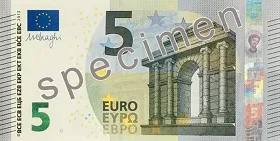 | 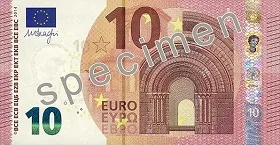 |
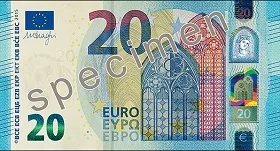 | 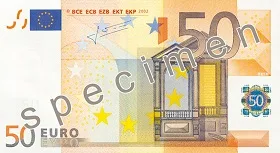 |
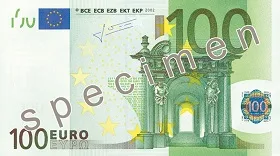 | 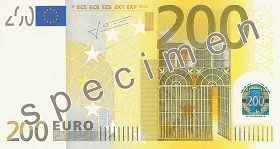 |
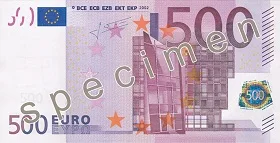 |
Take a combination of the travel money products to get the most from your travel budget. A credit card is a great way to finance big ticket purchases, while using a travel card or a debit card is better for smaller everyday expenses and cash withdrawals.
Give yourself a couple of different ways to access your travel budget in case something happens to one of your cards, as it can take you a couple of days to organise an emergency replacement card from Britain.
France has a lot to offer and won’t disappoint. First time visitors will no doubt be smitten by the country’s rolling hills, glamorous coastlines, ever-so-chic towns and cities, and of course, its delectable cuisine. If you have a tip to share about taking money to France, please share with other readers in the forum. If you have a question, use the form below and one of our team will be happy to answer it for you.
Learn more about your options for spending travel money in Colombia.
Discover the best ways to spend travel money in Belgium.
Discover the best ways to spend travel money in Fiji.
Get a multi-currency card instantly by visiting a Post Office branch, but watch out for the fees.
Find out how the Barclays Travel Wallet could save you money when spending overseas.
Store multiple currencies and enjoy fee-free spending while abroad with HSBC’s Global Money account.
Learn more about opening a bank account in Singapore as a foreigner.
Here’s all you need to know about the travel debit card that wants to make travelling and spending money abroad hassle free.
Taking a travel card is less stressful than taking a regular bank card and there’s also savings to be had. Find out if a prepaid travel card is right for you before booking your trip abroad.
The USA has a culture of credit, and it’s a society of card payments, read our travel money guide to find out which travel products to use and which to avoid using in the USA.